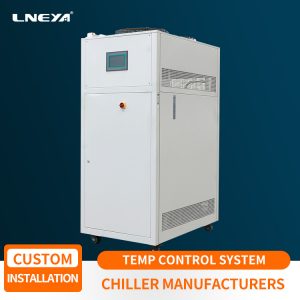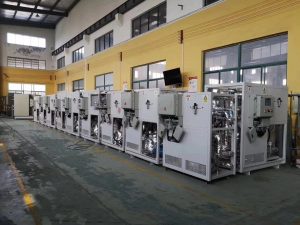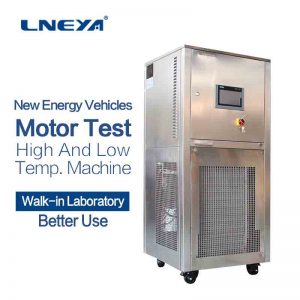How to control the temperature of solvent recovery by distillation?
1. If the product quality is not affected by the presence of air at a higher temperature, it can be recovered at normal pressure first, and when the temperature exceeds the normal pressure boiling point of the desolvent by 10 degrees, when the solvent cannot be evaporated, change the receiving bottle, and then reduce Pressure, the degree of vacuum rises slowly from -0.01mpa to the maximum according to the flow rate. Continue to keep for 0.5 hours until no liquid flows out.
2. If the product quality is affected by the presence of air at a higher temperature, you can first evacuate to the maximum, and then slowly heat up to a temperature 10 degrees higher than the normal pressure boiling point of the desolvated according to the liquid outflow speed. Continue to keep for 0.5 hours until no liquid flows out. However, if you want to recover the solvent in this way, it is best to cool the receiving bottle and condenser with ice water.
From the perspective of process design, it is necessary to fully understand the physical parameters of the materials involved in the process, and adopt a reasonable distillation method and heating medium. The selection of the distillation method is considered from the boiling point and range of the solvent. High boiling point materials When dealing with materials that are difficult to volatilize (boiling point above 150°C under normal pressure), vacuum distillation should be used; for medium volatile materials (boiling point under normal pressure is about 100°C), atmospheric distillation or reduced pressure should be used. suitable. In order to consider reducing the risk in extreme cases, that is, the continuous heating condensation fails and the system is closed, it is best to use hot water as all heating media if conditions are met. (for batch distillation)
In pharmaceutical and chemical industry, we may have heard such a process description, that is, “concentrate to dryness” and concentrate to “paste”; There is a “dry pot” situation.
For batch distillation and concentration, the following methods are usually adopted to reduce the risk of the process:
Control temperature: choose the heating medium with the highest temperature lower than the decomposition temperature (it is recommended to obtain the decomposition temperature through DSC test or ARC test, and the test sample should be representative, which is also the most effective source of safe operating temperature); vacuum distillation instead of normal pressure Distillation (lower distillation temperature);
When recovering waste liquid or solvent, choose continuous distillation instead of batch distillation.
Select the appropriate distillation equipment, some impurities or metal ions can catalyze the decomposition of the material (equipment selection, material should meet the process requirements).
Interlock: prevents ultra-gentle “steam dry”. The high temperature interlock closes the heating medium, and the low liquid level interlock closes the heating medium.
Some of the above content comes from the Internet, if you have any questions, please contact us: sales@lneya.com
Recommandations connexes
-
How to choose the right hot and cold circulator?
1072The hot and cold circulator is widely used in the pharmaceutical and chemical industry to provide users with hot and cold controlled, uniform temperature and constant temperature. It can also be directly equipped with reactors, reactors, etc. fo...
Voir les détails -
Étapes de débogage d'un refroidisseur d'eau industriel dans l'industrie chimique
905Après avoir terminé l'installation des refroidisseurs d'eau industriels dans les entreprises chimiques, il est nécessaire de procéder à un certain débogage au début de la phase d'exploitation. Ce n'est qu'en procédant à un débogage minutieux que nous pouvons...
Voir les détails -
Vocs adsorption equipment refrigeration temperature control instructions
1110Avec l'amélioration continue des exigences en matière de protection de l'environnement, chaque usine a également concentré ses efforts sur le traitement des gaz à effet de serre générés par la production. L'équipement d'adsorption des gaz à effet de serre de LNEYA peut traiter divers gaz à effet de serre. Alors, que savez-vous...
Voir les détails -
Le développement inéluctable du dispositif de refroidissement des batteries des véhicules à énergie nouvelle
899New energy vehicle battery test cooling device The energy crisis and environmental pollution have spawned the development of new energy vehicles. The key to the technology of new energy vehicles is the performance of power batteries. There are man...
Voir les détails
 LNEYA Industrial Chillers Fabricant Fournisseur
LNEYA Industrial Chillers Fabricant Fournisseur














